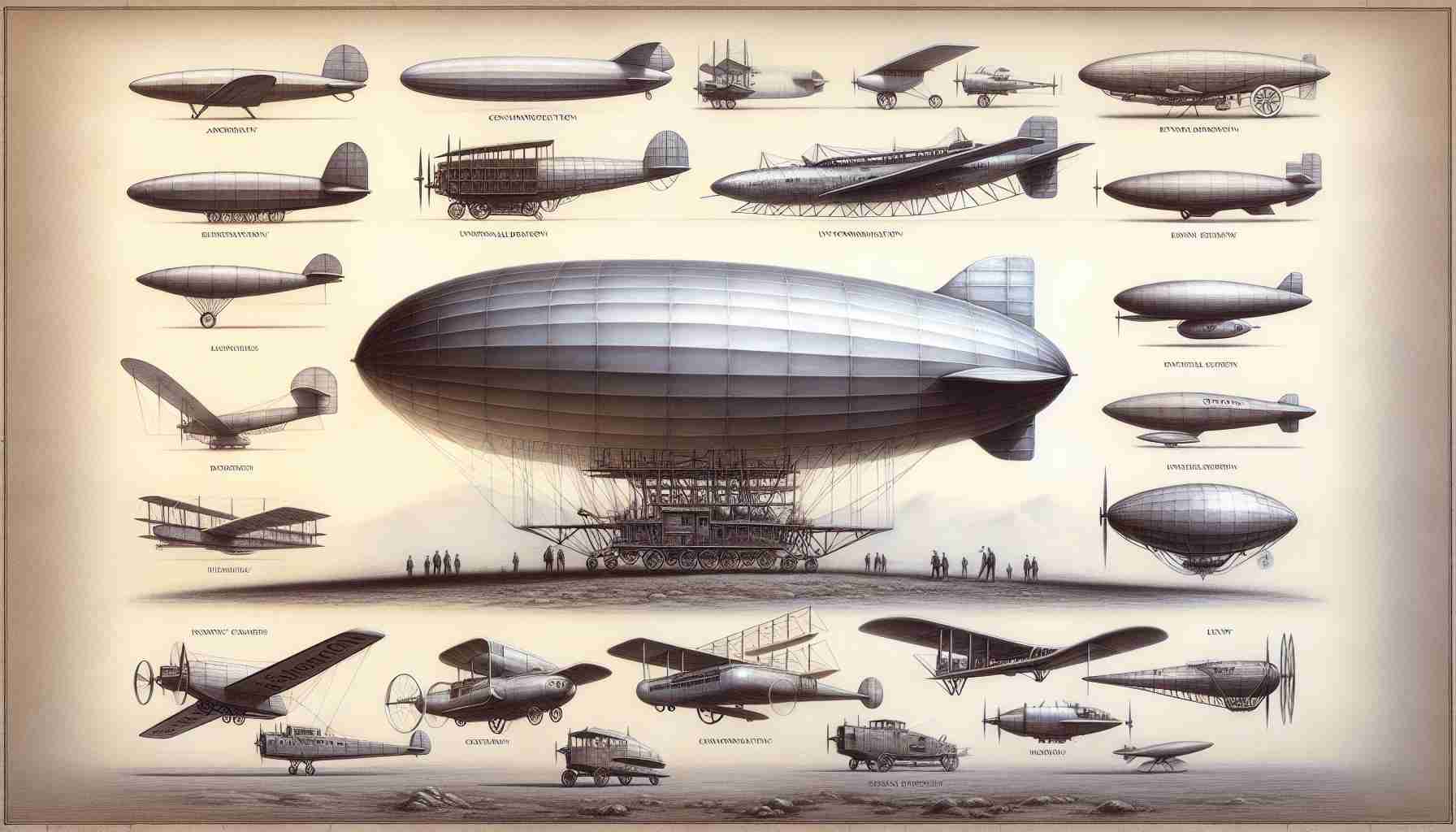On December 17, 1903, a groundbreaking moment in aviation history took place when the Wright brothers achieved the first powered flight in Kitty Hawk, North Carolina. This monumental event paved the way for a century of aviation advancements, with innovators continually pushing the boundaries of design. While countless aircraft designs have emerged, not every concept was successful in achieving flight.
With time, aircraft transitioned from simple wood and fabric constructions to advanced metal and composite designs. Early aviation was a trial-and-error endeavor, as engineers experimented with a variety of configurations—from propeller to jet engine designs—many of which presented unconventional looks. Some prototypes defied expectations and took to the skies, illustrating that functionality could come in unexpected forms.
Among the most unusual designs in aviation history are those like the Aerodyne and Nemeth Parasol. The Aerodyne, developed by Alexander Lippisch in 1972, showcased an innovative approach to vertical takeoff and landing without traditional wings. Its remote operation and distinctive aerodynamic features hinted at a new era in unmanned aerial vehicles.
The Nemeth Parasol, meanwhile, stood out with its peculiar wing structure that departed from conventional airplane aesthetics. These examples demonstrate that while many aircraft designs may appear bizarre, their successful flights reinforce the idea that achievement in aviation depends less on traditional forms and more on creative engineering.
The Evolution of Unconventional Aircraft Designs: An Exploration of Innovation
In the world of aviation, unconventional aircraft designs have played a pivotal role in shaping flight technology. As engineers have ventured beyond traditional models, they have embraced novel concepts that have transformed aviation. This article delves into the evolution of these designs, highlighting significant facts, challenges, and the duality of their advantages and disadvantages.
What defines an unconventional aircraft design?
Unconventional aircraft designs typically diverge from established norms regarding wings, fuselage shape, propulsion, and control mechanisms. These designs often feature innovative configurations, such as blended-wing bodies, canards, or flying wings, aimed at improving aerodynamic efficiency, enhancing payload capacity, or achieving unique flight characteristics.
Key Questions and Answers:
1. What are some notable examples of unconventional aircraft designs?
Some remarkable examples include the Northrop YB-35 flying wing, the NASA Helios Prototype, and more recently, the Airlander 10, which combines elements of airships and airplanes.
2. What are the main challenges faced during the development of these aircraft?
One significant challenge is the certification process, as regulators often require extensive testing and documentation to ensure safety. Additionally, the performance of unconventional designs can be unpredictable, requiring innovative solutions to issues such as stability and control.
3. How do these designs impact the future of aviation?
Unconventional aircraft designs are at the forefront of discussions on sustainable aviation technologies. Concepts utilizing electric propulsion and hybrid designs are being explored to reduce emissions and energy consumption.
Key Challenges and Controversies:
The pursuit of unconventional aircraft designs often leads to controversy over safety and reliability. For example, while the flying wing design offers significant aerodynamic benefits, it poses unique stability challenges that some engineers find difficult to mitigate. Additionally, there is skepticism surrounding the cost-effectiveness of developing new designs in a market dominated by conventional aircraft.
Advantages of Unconventional Aircraft Designs:
– Enhanced Aerodynamics: Many unconventional designs can achieve superior lift-to-drag ratios, resulting in increased fuel efficiency.
– Novel Capabilities: Some designs, like the V-22 Osprey, combine vertical takeoff capabilities with long-range flight, allowing them to fulfill roles that traditional aircraft cannot.
– Potential for Innovation in Materials: Unconventional designs often drive advancements in material science, leading to lighter and more durable structures, which are crucial for modern aviation.
Disadvantages of Unconventional Aircraft Designs:
– Regulatory Hurdles: The need for extensive testing and validation can delay the introduction of new aircraft into service and increase development costs.
– Public Perception: The unusual appearance of some aircraft can raise concerns about safety and reliability, making acceptance more challenging.
– Technical Complexity: Unconventional designs often involve complicated configurations that can complicate maintenance and operation.
Conclusion:
The evolution of unconventional aircraft designs showcases the remarkable creativity and innovation present in the aviation industry. While there are inherent challenges and controversies associated with these pioneering concepts, they offer promising avenues for the future of flight. As the industry moves towards sustainability and efficiency, unconventional designs may lead the way in revolutionizing how we think about aircraft.
For further insights into aviation developments and trends, you can visit NASA and FAA.











